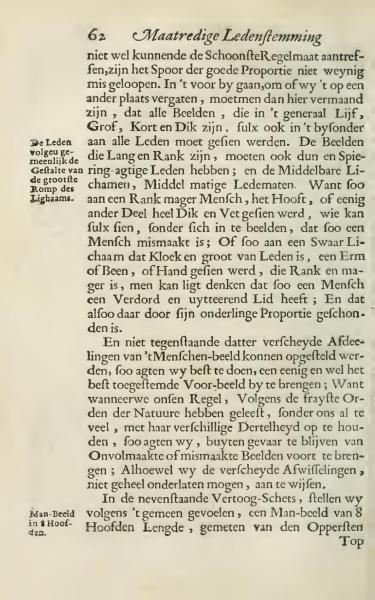Proportional Harmony of Limbs
When unable to achieve the highest harmony in rules of beauty, one often deviates from the path of good proportion. To move forward without forgetting another place, it should be noted here that all figures, whether coarse, short, or thick in the entire body, should also be similarly viewed in each part. Figures that are tall and slender should have thin and sinewy limbs; average bodies should have moderate limbs. For example, if a skinny person has a very thick and fat head or another part, this is seen as making the person imbalanced, or if a stout body has a lanky and thin arm, leg, or hand, it is easily thought that such a person has a withered and undermining limb; thus, their internal proportion is disrupted.
Despite this, while there could be various departments of depicting human figures, we consider it best to create a singular and well-suited example; for if we adhere to our rules according to the finest orders of nature without overindulging in their differing details, we see no danger in preventing the production of incomplete or misshaped figures. While we cannot entirely neglect the various variations, we aim to highlight them.
In the accompanying sketch, we traditionally depict a man figure with a height of 8 heads, measured from the crown of the head.
Translation Notes
- 'Ledematen' translates to 'limbs,' and 'Lichaam' means 'body.'
- 'Schoonste Regelmaat' means 'highest harmony in rules of beauty.'
- The unit of 'heads' used is a common art term for proportional measurement in figure drawing.
The text discusses the importance of achieving proportional harmony in depictions of the human body. It highlights how figures should have consistent proportions across their body parts to avoid appearing imbalanced. The text also emphasizes adherence to natural rules of beauty to prevent creating incomplete or misshaped figures.
